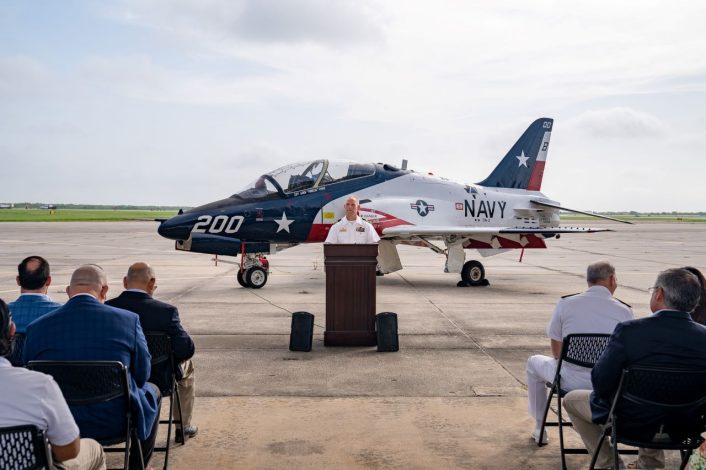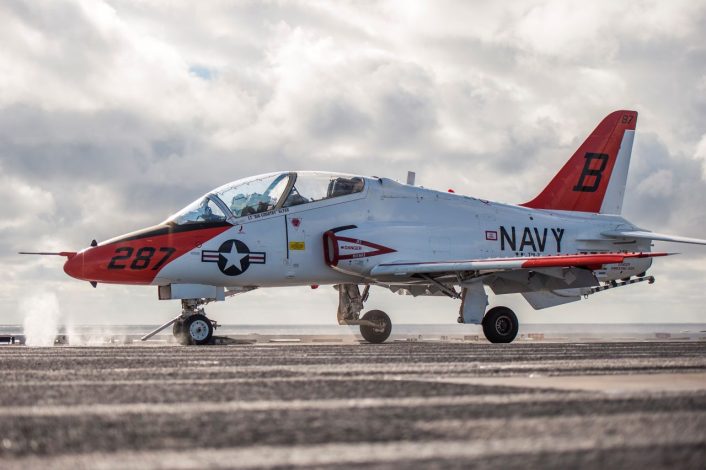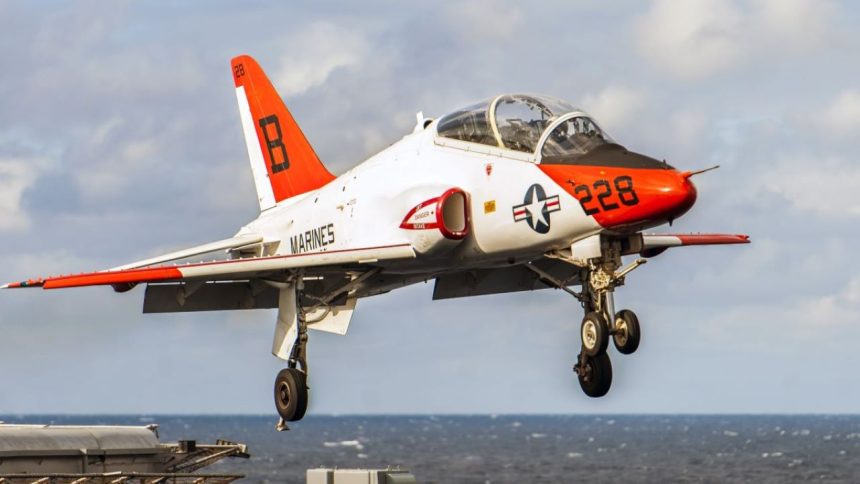The T-45C Goshawk Reaches Another Milestone While USN Debates Its Future Replacement.
Naval Air Station Kingsville’s Training Air Wing 2 (TW-2) recently reached a major milestone with its McDonnell Douglas / Boeing T-45C Goshawk fleet – 1,000,000 flight hours. And that’s not including hours flown by other squadrons of the jets.
In a ceremony held on the ramp in Kingsville on July 7, 2024, the Chief of Naval Air Training (CNATRA), representatives from Boeing, and representatives from the City of Kingsville, Texas met to celebrate the achievement.
“On May 1st, 1992, the first class of flight instructors from VT-21 assigned to fly the next generation of Naval Aviators in the new T-45A Goshawk began their training in the T-45. On 26 February, 2024, 30 years and one month after the Navy went full operational capability [with the] T-45 aircraft, Lt. Cmdr. Thomas “Sock” Cruz, from VT-22, operating aircraft 267, BuNo 165067, on a basic fighter maneuver event, crossed over the one-millionth flight hour in the T-45 here at NAS Kingsville, Texas,” announced CAPT Aaron “Princess” Rybar, Commodore of TW-2.

Training Squadron 22 (VT-22), the squadron with the honor of reaching the milestone, began as ATU-6 at NAS Corpus Christi in 1949, flying the Lockheed T2V SeaStar. After moving to NAS Whiting Field in that same year, they again moved to their current home at NAS Kingsville in 1951. The squadron has flown the T-45 since 1994. It is one of two training squadrons attached to TW-2.
The other, Training Squadron 21 (VT-21), began flight operations with the T-45A in 1991. The squadron was established in 1951 as Advanced Training Unit 202 (ATU-202) and assigned to flight training operations with the Grumman F6F Hellcat.

Interestingly, this milestone comes at a time when the airplane’s future replacement is up in the air. The Undergraduate Jet Training System (UJTS) program was originally planned to announce a contract winner in fiscal year 2026, but the decision has been moved back to fiscal year 2028.
As for the T-45, the Navy sees itself in need of a replacement because of several issues in the past, including oxygen supply woes and a recent fleet-wide grounding due to an “in-flight engine malfunction”, the second grounding in as many years. The issue is also experienced by the aircraft the T-45 was developed from, the BAE Systems Hawk, flown by Britain, India, and others.
The T-45, only flying since 1988, 36 years ago, is fairly new when compared to other airframes the United States military currently flies. Its Air Force counterpart, the T-38 Talon, clocks in at an age of 65 years.
The U.S. Navy is currently in the process of choosing between the Boeing-Saab T-7 (the winner of the Air Force’s T-X program to replace the T-38), Lockheed Martin-KAI T-50, and the Leonardo-Textron M-346N. Interestingly, Navy officials have all but decided the replacement aircraft won’t need to be aircraft carrier-capable and won’t have an arresting hook- for now. The current plan is to cut carrier qualifications out of the training syllabus entirely, instead relying on Field Carrier Landing Practice (FCLP), which involves landing the airplane on a short runway on land. If reversed, all of the three competitors will have to perform major, expensive redesigns to their entries to make them suitable for aircraft carrier operations.
The contract, according to the Request for Information, seeks to purchase 145 total replacement airplanes with a rate of 25 aircraft per year. The contract will include aircraft, simulators, and operating equipment as well as training curriculum.









